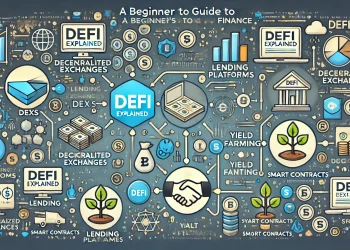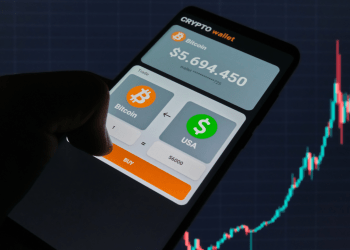As the cryptocurrency market continues to grow, identifying legitimate and high-potential projects has become increasingly challenging. While many coins offer great opportunities, the space is also plagued by scams, rug pulls, and poorly managed projects. This makes due diligence—a thorough investigation into a project’s background and potential—essential for any investor or participant. Whether you are looking to invest, trade, or participate in a blockchain project, understanding how to conduct proper due diligence can help minimize risks and maximize returns.
In this guide, we’ll walk through the key steps and criteria for evaluating cryptocurrency projects, including whitepapers, tokenomics, team backgrounds, security audits, and community activity.
1. Why Due Diligence is Crucial in Crypto Investing
The crypto industry operates in a largely unregulated environment, which makes it susceptible to fraud, poorly executed projects, and extreme volatility. Due diligence helps investors avoid scams, assess risk, and identify hidden opportunities. Key reasons to conduct due diligence include:
- Avoiding Rug Pulls: Rug pulls occur when project developers drain liquidity and abandon the project.
- Assessing Long-Term Viability: Many projects look promising initially but fail to execute their roadmaps.
- Minimizing Investment Risk: Thorough research helps you make more informed decisions and reduce exposure to high-risk assets.
- Identifying Hidden Gems: Diligent research can uncover undervalued projects with high growth potential.
2. Step-by-Step Guide to Conducting Due Diligence on Crypto Projects
2.1 Analyzing the Whitepaper and Roadmap
The whitepaper is a technical document that outlines a project’s goals, technical architecture, and tokenomics. While some whitepapers can be highly technical, they provide valuable insights into the project’s purpose and feasibility.
What to Look For:
- Clarity and Transparency: Is the whitepaper well-written and easy to understand, or is it vague and overly complicated?
- Use Case and Problem Solved: Does the project address a real-world problem or offer a unique solution?
- Feasibility of the Roadmap: Are the milestones and timelines realistic? Has the project already achieved any progress toward its goals?
- Competitive Landscape: Does the project mention competitors? A transparent whitepaper should acknowledge existing solutions and explain how it differs.
If the whitepaper is poorly written or lacks technical depth, it could be a red flag indicating the project is not serious or legitimate.
2.2 Assessing the Project Team and Advisors
The quality of the team behind the project plays a significant role in its success. Many successful crypto projects are led by experienced professionals with backgrounds in blockchain, technology, or finance.
What to Check:
- Team Members’ Backgrounds: Look up the developers and founders on LinkedIn or other professional platforms. Do they have relevant experience in the crypto space?
- Track Record of Past Projects: Have they worked on other successful projects?
- Advisors and Partners: A strong advisory board can add credibility. Partnerships with well-known companies or institutions are also a positive sign.
- Transparency: Are the team members public and accessible? Anonymous teams can be a red flag, although there are exceptions (e.g., Bitcoin’s anonymous creator, Satoshi Nakamoto).
Transparency and active involvement by the team build trust within the community and indicate a commitment to long-term success.
2.3 Evaluating Tokenomics
Tokenomics refers to the economic structure and incentives surrounding a cryptocurrency. Poor tokenomics can result in excessive supply, inflation, or insufficient demand, ultimately leading to price depreciation.
Key Aspects to Analyze:
- Total Supply vs. Circulating Supply: How many tokens are currently in circulation, and how many are yet to be released?
- Token Allocation: Check how tokens are distributed among the team, investors, and community. A high allocation to insiders could indicate a risk of early dumping.
- Utility of the Token: Does the token have a clear use case within the project’s ecosystem, such as staking, governance, or payment?
- Inflation or Deflation Mechanisms: Does the project use token burns or rewards to control inflation? Deflationary mechanisms can increase scarcity over time.
Projects with well-designed tokenomics provide sustainable incentives for long-term participants and reduce the risk of rapid price drops.
2.4 Security and Audits
Security is paramount in the crypto space, as vulnerabilities can lead to hacks and loss of funds. Well-developed projects often undergo third-party audits to ensure that their smart contracts are secure.
What to Verify:
- Audit Reports: Check whether the project has been audited by a reputable firm, such as CertiK, Quantstamp, or OpenZeppelin.
- Security Best Practices: Does the project follow best practices for smart contract development?
- History of Exploits: Has the project experienced any security breaches or exploits in the past? If so, how did the team respond?
- Bug Bounties: Some projects offer bounties to incentivize ethical hackers to find vulnerabilities, which is a sign of proactive security management.
Skipping security audits or failing to address vulnerabilities can put the project—and its users—at risk.
2.5 Community Activity and Sentiment Analysis
An engaged and active community is often a sign of a healthy project. Projects with strong community backing are more likely to attract users, developers, and investors, which can drive growth and adoption.
How to Analyze Community Strength:
- Social Media Presence: Check the project’s presence on Twitter, Reddit, Discord, and Telegram. Are discussions organic, or do they seem manufactured?
- Developer Activity: A project’s GitHub repository can provide insights into how actively developers are working on the code.
- Sentiment Tools: Use tools like LunarCrush or CryptoMood to track the overall sentiment around a project. Positive sentiment may indicate growing interest.
- Transparency: Projects with regular AMA sessions (Ask Me Anything) and frequent updates show that the team is committed to engaging with the community.
Beware of bot-generated hype on social media, as some projects artificially inflate their follower counts to appear legitimate.
2.6 Analyzing Market Performance and Liquidity
Market performance offers insights into how the project is being received by the broader crypto community.
What to Look For:
- Exchange Listings: Is the token listed on reputable exchanges like Binance, Coinbase, or Kraken? Projects listed on major exchanges often undergo rigorous due diligence.
- Trading Volume: Low trading volume can indicate poor liquidity, making it difficult to buy or sell the token without significant slippage.
- Price History: Analyze the token’s price movements over time. Has the token shown growth or consistent declines since its launch?
- Whale Activity: Use tools like Nansen.ai to track large wallets and whale movements. If a few wallets control most of the supply, it could indicate a risk of manipulation.
Projects with healthy liquidity and consistent growth are generally more stable and less prone to manipulation.
2.7 Legal and Regulatory Compliance
Regulatory compliance is becoming increasingly important as governments around the world tighten their crypto policies. Ensuring that a project complies with relevant laws reduces the risk of future disruptions.
What to Verify:
- Token Classification: Check if the token is classified as a utility token or security token, as this affects its regulatory requirements.
- Country of Incorporation: Some jurisdictions are more crypto-friendly than others. Projects based in regulated environments (e.g., Switzerland, Singapore) may offer more stability.
- Legal Disclosures: Does the project publish legal disclaimers and terms of use? Transparent projects often address potential risks and legal concerns upfront.
- KYC and AML Compliance: Some DeFi projects may require Know Your Customer (KYC) and Anti-Money Laundering (AML) procedures to comply with regulations.
Failure to comply with regulatory requirements can result in legal actions that negatively impact the project’s future.
3. Common Red Flags to Avoid in Crypto Projects
While conducting due diligence, watch out for the following warning signs:
- Anonymous Teams: A lack of transparency about the team can indicate a potential scam.
- Unrealistic Promises: Projects promising guaranteed returns or “risk-free” investments should raise suspicion.
- Poor Website or Documentation: Low-quality materials often reflect a lack of professionalism or commitment.
- Lack of Audit Reports: Projects without audits may have undiscovered security vulnerabilities.
- Overhyped Marketing: If the project focuses more on hype than technical development, it may be a red flag.
Conclusion: The Importance of Thorough Due Diligence
In the fast-paced world of cryptocurrency, due diligence is essential to making informed decisions and avoiding scams or poorly managed projects. Evaluating whitepapers, tokenomics, team credentials, security audits, community involvement, and market performance can provide valuable insights into a project’s potential.
By investing time in research, you can minimize risks and identify high-quality projects with sustainable growth potential. Although the crypto market is volatile, thorough due diligence helps you make smarter investments and navigate the risks more effectively. In a space where fortunes can be made or lost quickly, knowledge and preparation are your best allies.















